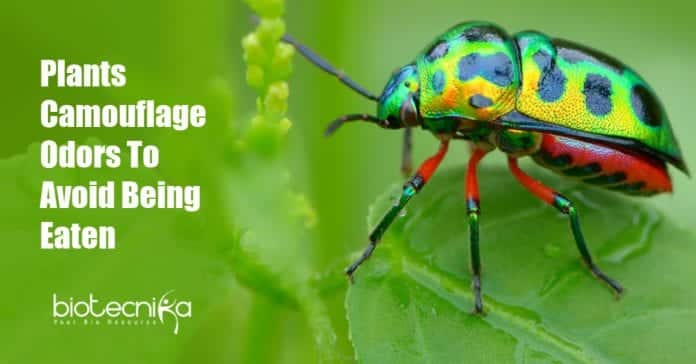Plants camouflage odors to avoid being eaten
In dense tropical forests, plants have the ability to camouflage their chemical odors in order to avoid being identified and eaten by pests, in the “information arms race” between themselves as well as plant-eating herbivores – this is a key advantage.
In Chamela-Cuixmala, a tropical forest reserve on the western shore of Mexico, the European and North American scientists tested 28 species of insects and 20 plant species.
A pack mentality that keeps them alive and confuses hungry herbivores – How individual members of “complex plant communities” evolve to emit similar smells are described in this research.
Professor Phil Stevenson, a researcher at Britain’s Royal Botanic Gardens, Kew said, “Easily identified odors are to the herbivores’ advantage and plants’ drawback”.
He added, “So, we have an information arms race, plants do their best to smell like other plants as they want to avoid being located and eaten.”
Pengjuan Zu, lead author at Massachusetts Institute of Technology said, this study was the first time scientists had the ability to check the interactions between such a wide range of plants and insects.
Specific plant species under controlled conditions were used to study the cat-and-mouse evolution
game between plants and insects.The authors added, “This is different from the ensemble of the plant and insects in real-life forests that exist together.
The research:
Nearly two-dozen plant species emitting chemical odors were collected by Zu in silicon tubes, which were after that brought back to Kew to be assessed.
Scientists were able to build models of these plant-herbivore communication networks – through a combination of “information theory” – a method for understanding communication patterns in human beings – and existing understandings of evolutionary biology.
Zu said, “In a complex community of plants, all the chemicals synthesized by plants carry details which has a vital role in chemically camouflaging plants”.
Possibly leading the way for future research studies, this research could assist researchers better understand how information is passed between carnivores and insect-eating herbivores and other different species in the food chain.
Zu added, “Subsequently, for finding certain plant hosts, herbivores, have to evolve to be better tuned with the information”. “An info chain along the food chain is created by further sharing the details by carnivores that hunt pest herbivores”.
The study was published in the journal Science on Thursday.






























